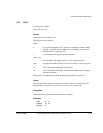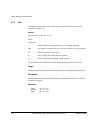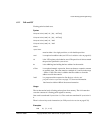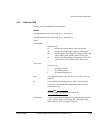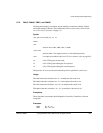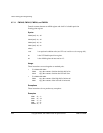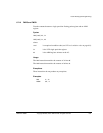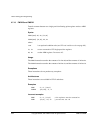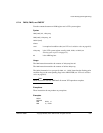
Vector Floating-point Programming
ARM DUI 0068B Copyright © 2000, 2001 ARM Limited. All rights reserved. 6-27
6.7.9 FMAC, FNMAC, FMSC, and FNMSC
Floating-point multiply-accumulate, negate-multiply-accumulate, multiply-subtract
and negate-multiply-subtract. These instructions can be scalar, vector, or mixed (see
Vector and scalar operations on page 6-7).
Syntax
<op><precision>{cond} Fd, Fn, Fm
where:
<op>
must be one of
FMAC
,
FNMAC
,
FMSC
, or
FNMSC
.
<precision>
must be either
S
for single-precision, or
D
for double-precision.
cond
is an optional condition code (see VFP and condition codes on page 6-8).
Fd
is the VFP register for the result.
Fn
is the VFP register holding the first operand.
Fm
is the VFP register holding the second operand.
The precision of
Fd
,
Fn
and
Fm
must match the precision specified in
<precision>
.
Usage
The
FMAC
instruction calculates
Fd
+
Fn
*
Fm
and places the result in
Fd
.
The
FNMAC
instruction calculates
Fd
–
Fn
*
Fm
and places the result in
Fd
.
The
FMSC
instruction calculates –
Fd
+
Fn
*
Fm
and places the result in
Fd
.
The
FNMSC
instruction calculates –
Fd
–
Fn
*
Fm
and places the result in
Fd
.
Exceptions
These operations can produce Invalid Operation, Overflow, Underflow, or Inexact
exceptions.
Examples
FMACD d8, d0, d8
FMACS s20, s24, s28



